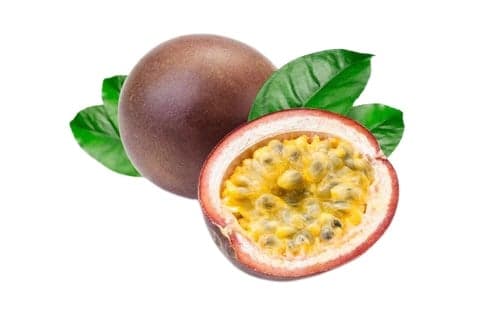
Passion fruit
ca. 60 gca.
More info
Delivery to your door
We source locally for the freshest groceries you can trust.
- Description
- Composition
- Similar products
- More from this brand
- Recipes
There are 400 species of the genus Passiflora, some of which produce enchantingly beautiful flowers. The fruits of the different species vary in size, round, oval, yellowish, wine-red, purple-violet to dark brown in colour. The shrivelled-skinned fruit has a large core that contains a white to yellowish, jelly-like mass in addition to countless blackish seeds. The passion fruit tastes refreshingly sweet and sour and has a distinctly exotic aroma.
Origin
The home of the various species of passion fruit (u. a. Granadilla and passion fruit) are the countries of Central and South America. Apart from there, cultivation takes place mainly in Australia, New Zealand, South Africa, Kenya, California and Hawaii. In this country, passion fruits are mainly offered in early summer and summer. The rest of the year, fruit comes to us from Kenya and South America.
Tips
After harvesting, the passion fruit shrinks. However, this is not a sign of spoilage, but a sign of post-ripening. The fruit becomes fuller and sweeter in taste. Passion fruit can usually be stored in the fridge for 2 weeks after purchase.
Preparation
For eating raw, the fruits are halved and the pulp is scooped out. The seeds are eaten as well. Passion fruit is also used in fruit salads, ice cream, quark dishes, puddings and other desserts.
For a refreshing juice put the pulp of 3 passion fruits in a blender with 300ml of water. Mixed briefly, the pulp separates from the seeds. The juice is then sieved to finally separate the seeds from the aromatic yellow juice. Return the juice to the blender and add a tablespoon of sugar to taste.
